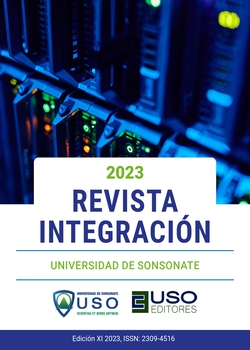Teaching design of virtual environments for the development of competencies in higher education
DOI:
https://doi.org/10.5377/ri.v11i11.18365Keywords:
Competencies, Didactic design, VLE, Standards, TechnologyAbstract
In today's world, virtual education must become a space that provides opportunities beyond just publishing informative content and concepts designed under an interactive teaching model. This article analyzes the relationship between the teaching design of virtual learning environments (VLE) and the development of competencies at a higher education level, with standards and the ISO 25000 competency-based approach (Tuning Project, Curricular Transformation) for the teaching design of virtual environments and the official documents that frame higher education in Latin America and Europe. This study was based on the postulates of subject matter experts and official documents from various countries. It is a documentary study based upon previous research. This is a qualitative study under a descriptive design of the characteristics and phenomena associated with the VLE's teaching design. The effects on learning and competency development are complex and depend on such factors as culture, previous knowledge, self-learning techniques, contents and learning design among others. VLEs make the effects on learning and competency development complex. In conclusion, it is not only a matter of implementing technologies as part of the VLEs, but also of incorporating learning designs that allow students to construct their learning in dynamic spaces. Such learning process must be based on innovative strategies and techniques evaluated based on diagnoses which recognize whether VLEs comply with national and international standards that guarantee the construction of competencies.
357
Downloads
Published
How to Cite
Issue
Section
License

This work is licensed under a Creative Commons Attribution-NonCommercial-ShareAlike 4.0 International License.
You are free to:
- Share — copy and redistribute the material in any medium or format
- Adapt — remix, transform, and build upon the material
- The licensor cannot revoke these freedoms as long as you follow the license terms.
Under the following terms:
- Attribution — You must give appropriate credit , provide a link to the license, and indicate if changes were made . You may do so in any reasonable manner, but not in any way that suggests the licensor endorses you or your use.
- NonCommercial — You may not use the material for commercial purposes .
- ShareAlike — If you remix, transform, or build upon the material, you must distribute your contributions under the same license as the original.
- No additional restrictions — You may not apply legal terms or technological measures that legally restrict others from doing anything the license permits.
Notices:
You do not have to comply with the license for elements of the material in the public domain or where your use is permitted by an applicable exception or limitation .
No warranties are given. The license may not give you all of the permissions necessary for your intended use. For example, other rights such as publicity, privacy, or moral rights may limit how you use the material.




